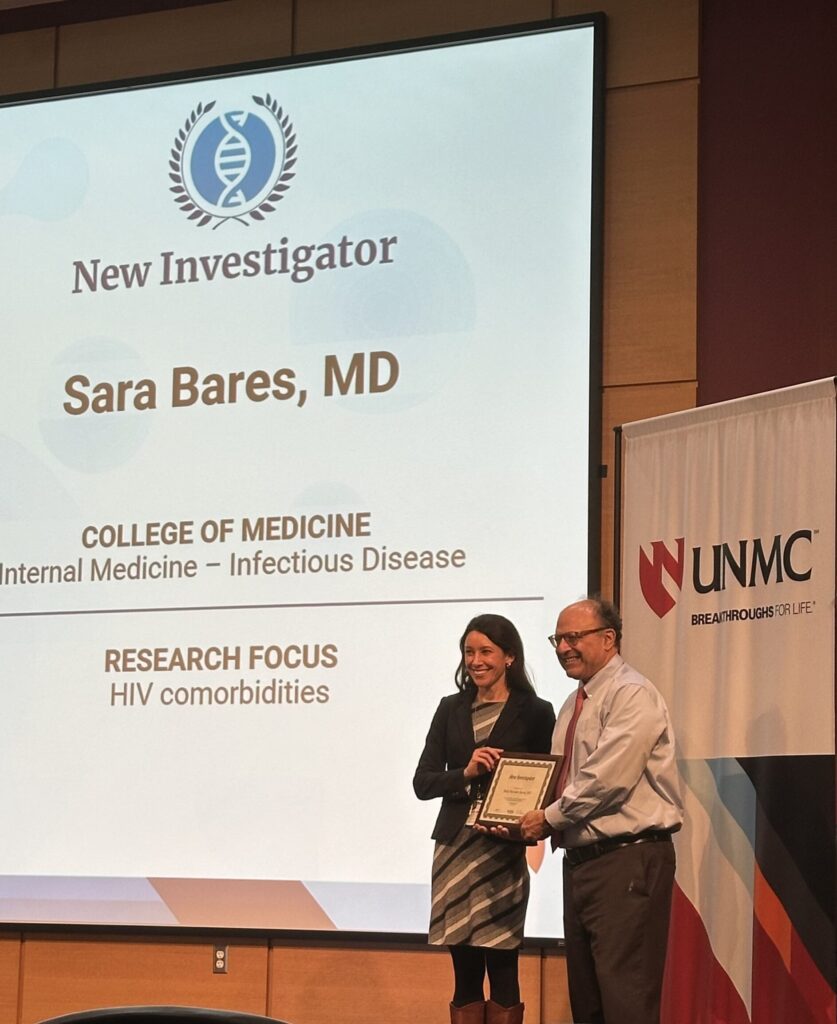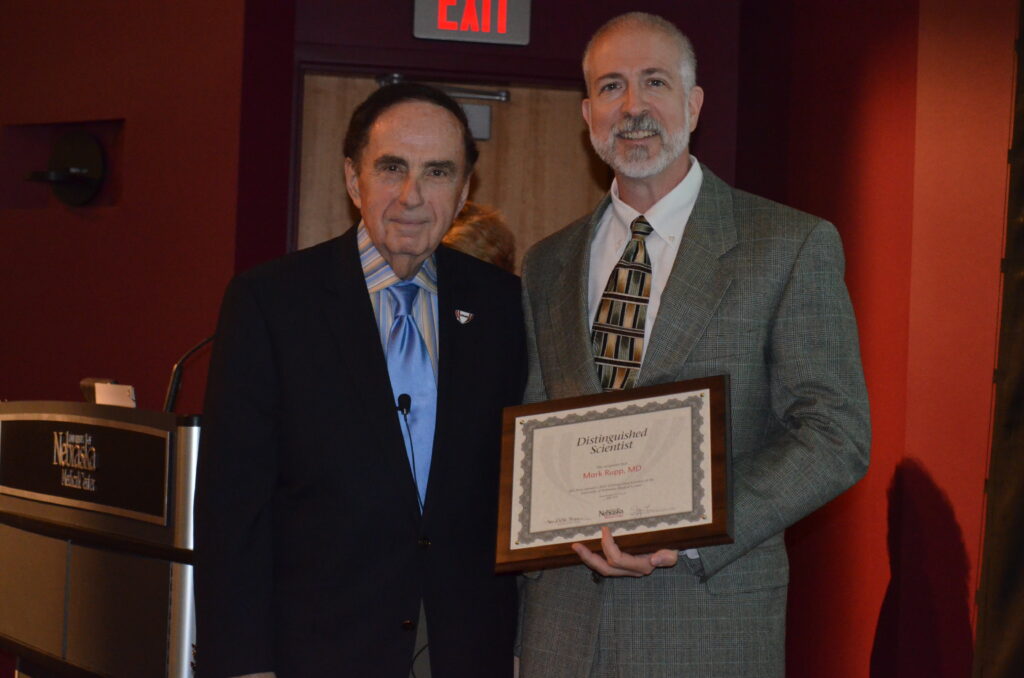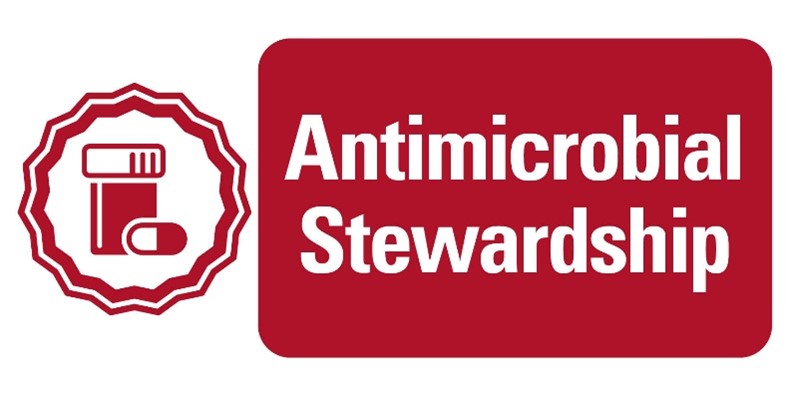Congratulations to Dr. Sara Bares, who received the UNMC New Investigator Award on November 14, 2024. Dr. Bares is an Associate Professor in the Division of Infectious Diseases. She joined the division in 2013 and her clinical and research interests include HIV treatment and prevention, HIV-related comorbidities and HIV in women.
Dr. Bares has been successful with significant federal grant funding and publication of impactful scholarship. In 2023 she was was awarded an RO1 from the National Institutes on Aging for a proposal entitled: “Hormone Therapy for Peri- and Postmenopausal Women with HIV (HoT).” This year Dr. Bares was awarded an R25 grant from the NIH entitled “EMPOWHer: Embracing Midlife and Menopause Positively-Offerings by Women with HIV.” Dr. Bares leads the research activities of the UNMC Specialty Care Clinic which conducts both NIH and industry-funded studies focused on advancing care for people with HIV.
Dr. Bares’ manuscript “Weight Gain After Antiretroviral Therapy Initiation and Subsequent Risk of Metabolic and Cardiovascular Disease” in Clinical Infectious Diseases (2024 Feb 17;78(2):395-401), was chosen as the Department of Internal Medicine Publication of the Quarter for the first quarter of 2024. This departmental award recognizes the quality of the science and impact of the publication.
In 2022, Dr Sara Bares received the HIV Medicine Association (HIVMA) Research Award. The Research Award recognizes outstanding contributions to HIV medicine in clinical or basic research. She was recognized “for her work as a prolific and collaborative researcher advancing studies to increase understanding of HIV-related sex differences, HIV and aging and the cardiometabolic complications of HIV“.
In addition to being an exceptional clinician and researcher, Dr. Bares is an inspiring team leader and collaborator. Her award acceptance remarks always include thanks to her collaborators, mentors, mentees, patients (at UNMC and in the AIDS Clinical Trial Group), and especially her outstanding research team at the UNMC Specialty Care Center. “I know R01s are for investigators but our whole SCC research team is so talented – I want to make sure they are included in the recognition and know how much they are appreciated!“, she said.

UNMC New Investigator Awards go to outstanding scientists who in the past two years have secured their first funding from the National Institutes of Health, the Department of Defense or other national sources.
New Investigators also had to demonstrate scholarly activity, such as publishing their research or presenting their findings at national conventions.
We are very proud of Dr. Bares for her impactful research and clinical care and look forward to celebrating her future accomplishments!



































Recent Comments